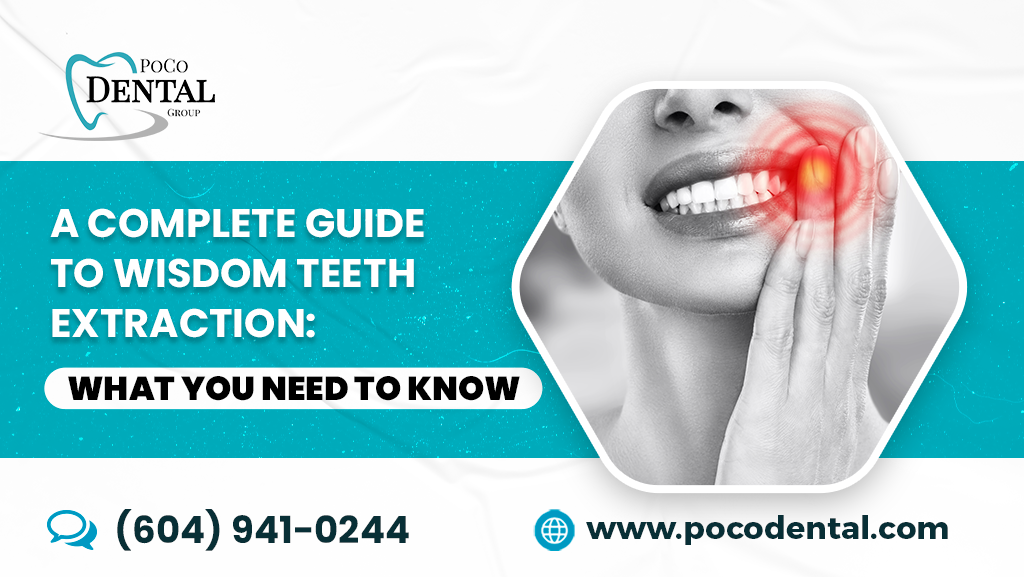Are you experiencing that all-too-familiar ache in your mouth? The kind that makes it hard to focus, eat, or even smile. Don’t worry – you’re not alone. Wisdom teeth troubles are a rite of passage for many adults. But fear not! In this ultimate guide to wisdom teeth extraction, we have everything you need to know about this dental procedure, from understanding the signs and symptoms to post-extraction care tips.
What are Wisdom Teeth?
Most people have four wisdom teeth, the third molars in their mouth. They usually come in between the ages of 17 and 25. Impacted wisdom teeth can cause pain, infection, and damage to other teeth. If you have your wisdom teeth removed, it’s important to take care of your mouth and follow your dentist’s instructions.
Why Do People Need to Have Them Removed?
People may need to remove their wisdom teeth for several reasons. For some, the teeth can come in at an angle and push on the other teeth, causing pain or problems with bite alignment. Additionally, wisdom teeth that don’t come in entirely or only partially erupt can trap food and bacteria underneath the gum line, leading to tooth decay or infection.
What is the Procedure for Extracting Wisdom Teeth?
Wisdom teeth extraction is a common procedure that oral surgeons perform. The procedure is usually done under local anesthesia, which numbs the area around the wisdom teeth. The surgeon will make an incision in the gum tissue to expose and remove the wisdom teeth.
How Long Does Recovery Take After Wisdom Tooth Extraction?
Your recovery after wisdom teeth removal will depend on a few factors, such as how many wisdom teeth you have removed, the type of anesthesia used, and your pain tolerance and healing ability. Most people feel well enough to return to normal activities within a day or two. However, it is important to take things easy for the first few days and avoid strenuous activity or chewing hard foods. This will help ensure that your surgical site heals properly.
Following surgery, you may experience some swelling and bruising around your face and jaw. This is normal and will usually resolve itself within a week or so. To help reduce swelling, apply ice packs to your face for 20 minutes at a time, several times a day for the first few days. You can also take over-the-counter pain medication as needed to help manage any discomfort you may be feeling.
Most people can return to work a few days after removing their wisdom teeth. However, if your job involves physical labour or you are still experiencing significant pain, you may need to take additional time off to recover. It is important to listen to your body and not push yourself too hard – this will help ensure a speedy and successful recovery.
Pain Management After Wisdom Tooth Extraction
Here are a few things you should know about managing pain after wisdom tooth extraction:
1. Over-the-counter pain medication is usually needed to relieve discomfort.
2. If your pain is more severe, your dentist may prescribe a more vital pain medication.
3. Ice packs can also help reduce swelling and pain. Apply them to the outside of your cheeks for 20 minutes, several times daily.
4. take it easy for the first 24 hours after surgery. Avoid strenuous activity and stay hydrated by drinking plenty of fluids.
Diet and Nutrition Tips After Wisdom Tooth Extraction
Following a soft food diet and good oral hygiene habits is important after wisdom teeth removal. This will help you heal and avoid infection.
Some guidelines to follow are:
– Avoid hard, crunchy, or chewy foods for at least a week. This includes popcorn, chips, nuts, pretzels, raw vegetables, and tough meat.
– Stick to soft foods like mashed potatoes, soup, yogurt, applesauce, ice cream, and pudding.
– Gradually add other foods back into your diet as you feel comfortable.
– Avoid using a straw for at least a week as the suction can disturb the blood clot that forms in the extraction site and cause a dry socket.
– Rinse your mouth with salt water (1/2 teaspoon of salt in 8 ounces) several times daily to cleanse the area and speed healing.
Alternatives to Extracting a Wisdom Tooth
Depending on the individual case, there are a few alternatives to extracting a wisdom tooth. One option is orthodontic exposure and bonding when the wisdom tooth is pushed up into place with braces or other devices. Another option is alveolar decortication, which involves surgically removing part of the bone around the wisdom tooth to make room for it.
Conclusion
Wisdom teeth extraction is a procedure that can be relatively simple with the proper preparation and knowledge. We hope this guide has helped you understand wisdom teeth removal, including why it’s necessary, what to expect during treatment, potential risks and complications, and how to care for yourself afterward. With all that in mind, if you have any questions or concerns about removing your wisdom teeth, don’t hesitate to contact PoCo Dental Group, your trusted dentist in Coquitlam.
At PoCo Dental Group, we understand the importance of optimal oral health. We take a personalized approach to ensure a comfortable and stress-free patient experience when it comes to wisdom tooth extraction. Our skilled and experienced dentists carefully evaluate each patient’s situation and determine the best action.
Trust us to handle your wisdom tooth extraction with the utmost care and professionalism, leaving you with a healthier and happier smile. Contact us today to schedule a consultation and experience the difference our expertise and dedication can make.




